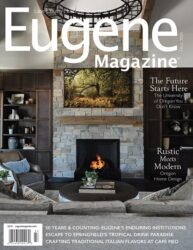In 2000, the population of the Eugene/Springfield area was 190,800. It’s now approaching 240,000. A growing population also means a growing need for new housing. Local governments on both sides of the Willamette River are working to give area residents more options.
Between the 2023 and 2027 fiscal years, Eugene is working to issue permits for the construction of 6,000 housing units, including increasing the amount of housing in downtown by 50% over 2021 numbers. In 2012, Eugene had projected a need for 15,000 housing units by 2023 to accommodate the area’s population growth.
“We now know the real need is much higher,” says Amber Allan, housing and homeless communications manager with the city of Eugene. “Eugene needs to increase annual housing production by about 70% over the next 20 years to accommodate not only population growth, but also to address decades of underproduction as well as meet the needs of people experiencing homelessness.”
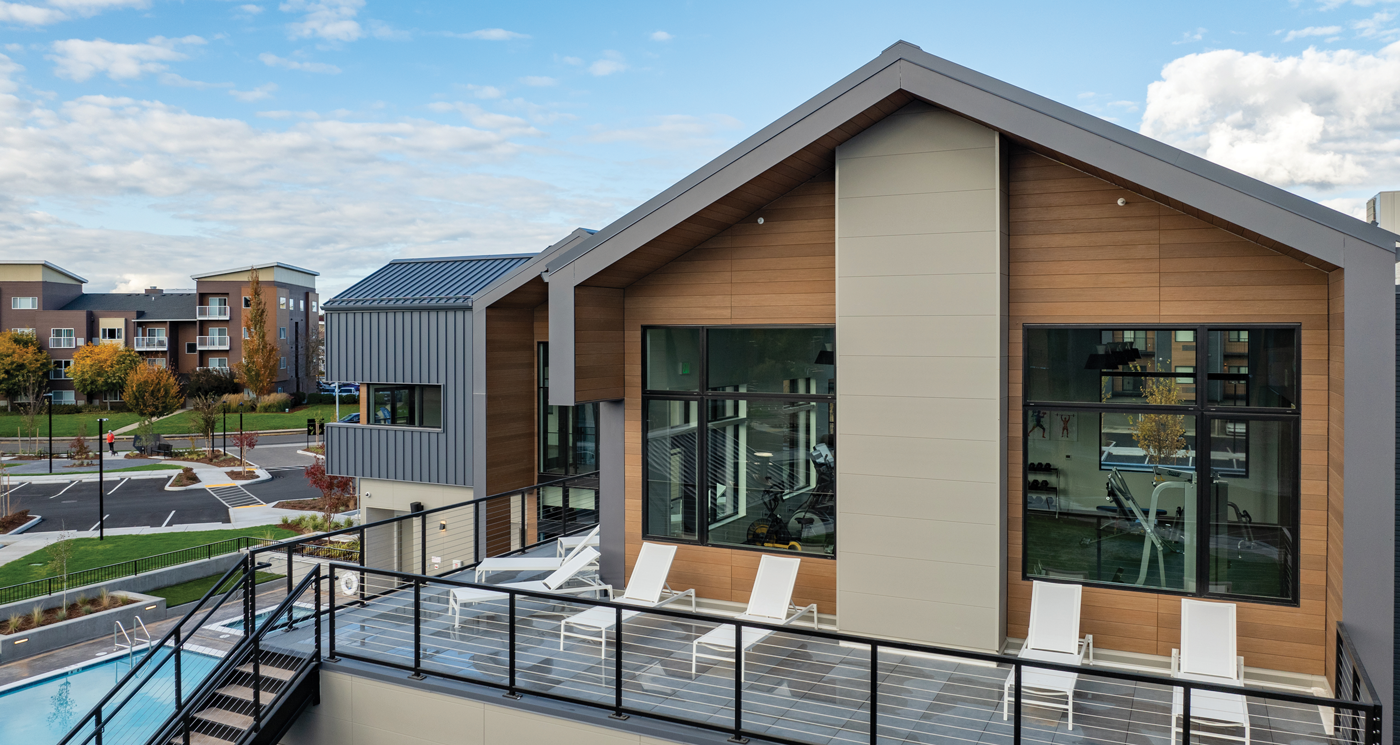
Delta Ponds Area
Near the scenic Delta Ponds area along Goodpasture Road in Eugene, The Ponds on Alexander is now renting. Local contractor Essex General Construction announced completion of the 195,000-square-foot complex on November 8, 2024. Along with 186 units, including two-story lofts in four four-story residential buildings, residents can enjoy a common community building, pool, lounge, and rooms dedicated to yoga and exercise, plus easy access to main roads and local outdoor recreation areas.
New housing in the Eugene area offers a swath of options, from upscale luxury units to affordable housing that includes easier access to amenities including groceries, laundry, social services, and even child care.
Housing authority Homes for Good has taken the lead on various affordable housing projects, such as the 81-unit Ollie Court, under construction on three acres at 13th and Chambers. With completion expected later in 2025, the apartment complex includes community green space, a 12,000-square-foot Early Learning Center, and three playgrounds.
“The city has implemented numerous policies and plans over the last several years that emphasize housing as an urgent community need and demonstrate a pro-housing agenda,” notes Allan.
That includes new student-oriented housing developments, she adds.
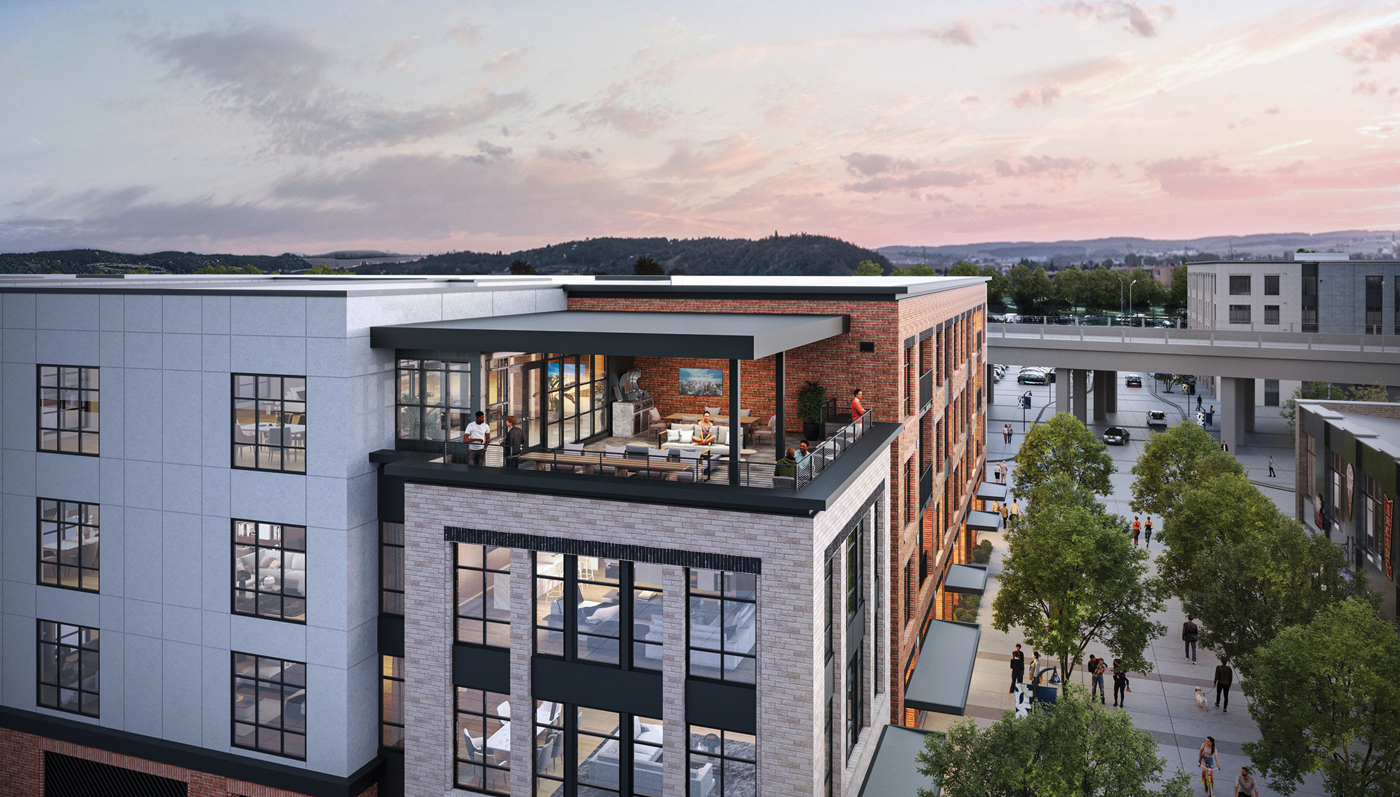
New Student Housing
The increased supply of student housing “has helped to ease demand in nearby neighborhoods and elsewhere in town,” says Allan. “These students can walk to campus and easily access the EmX system that connects the area to the rest of the community. This makes it easier for the students to live in Eugene without a car, reducing their carbon footprint and relieving pressure for on-street parking spaces in the nearby neighborhoods.”
The Downtown Riverfront District is home to multiple projects, from Eugene’s new City Hall to market-rate housing developments designed for a range of family sizes. Once the district is fully developed, up to 1,000 new market-rate residences will be available.
“The Riverfront Park is a destination for all Eugeneans, and we anticipate it to be a draw for all community members and visitors to our area,” says Allan. “It will offer an exceptional riverfront experience for recreation, local businesses for patrons, and new housing within easy walking distance to campus, downtown, and natural recreational areas.”

Downtown Riverfront Neighborhood
The first of six residential buildings in Riverfront is the Heartwood Apartments, also built by Essex General Construction, which is also building Portal. Heartwood’s recent opening adds 95 market-rate apartment units to downtown, soon to be followed by developments that include 75 affordable housing units.
Next up is The Portal, opening in 2025. Its 130 market-rate apartments at 4th and Mill include four three-bedroom and 73 two-bedroom apartments, along with 19 studios. The Portal’s healthy design and building standards include Earth Advantage Gold and Fitwell 1-star compliance, and the building includes bike racks, fitness rooms, and proximity to the Willamette River, Alton Baker Park, and 5th Street Public Market.
“Our vision for a vibrant new Downtown Riverfront neighborhood is now coming to fruition,” says Denny Braud, planning and development director for the city of Eugene. “We are transforming the former EWEB utility property into an exciting new destination where people can live and play along the riverfront.”
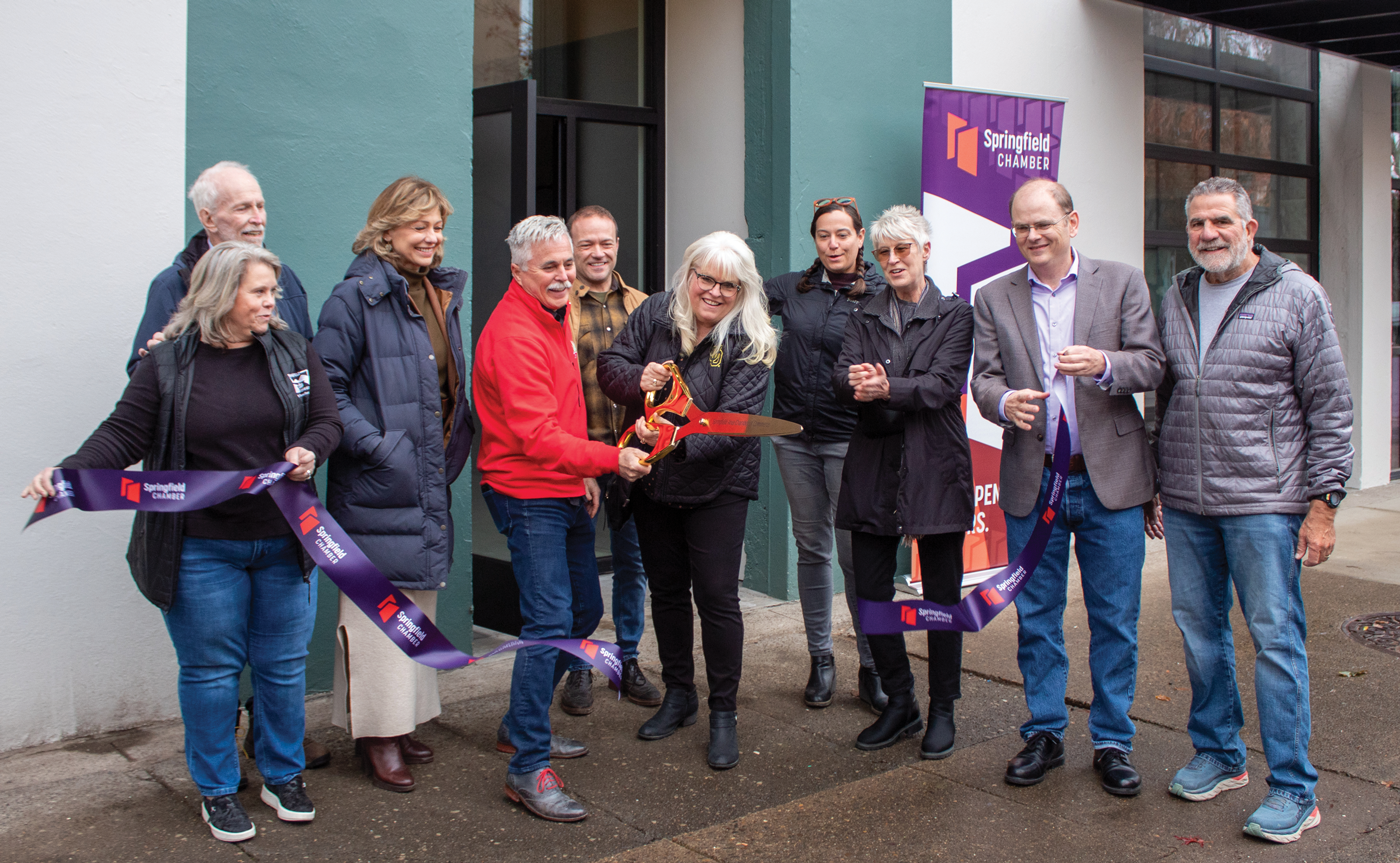
New Construction In Springfield
East of the Willamette River, the city of Springfield has also been focused on renovations and new construction to increase the amount of available modern housing. A Housing Needs Analysis adopted in 2011 identified a local need for 5,920 new dwelling units by 2030. Springfield planning staff are coordinating with nonprofit organizations and development firms to renovate legacy buildings and foster new construction.
“Springfield’s City Council has placed a strong emphasis on homeownership, as it fosters household stability and offers opportunities for wealth building,” says Elyse Ditzel, public information officer at Springfield’s city manager’s office. “Springfield’s goal is to attract a balanced mix of rental and resident-owned units to address existing gaps and ensure a range of options for residents of all income levels and housing needs.”
The Housing Needs Analysis estimated that 57% of new housing units would be needed for homeowners and 43% for renters to meet Springfield’s projected housing needs. Much of the area’s current housing is already occupied. For homeowners, a healthy vacancy rate is typically 2%. Springfield’s homeowner vacancy rate is 0.4%. (Vacancy rates take into account homes under renovation, for sale, or in other circumstances where the home isn’t currently occupied.) The situation is similar on the rental side. From a healthy 5% rental vacancy rate benchmark, Springfield’s is only 1.6%.
“This persistent low rate reflects the area’s limited availability of rental units,” says Ditzel.
As city planners review development goals, they take population trends into account too.
“The median age of residents continues to increase, plus fewer families with children at home have contributed to a trend of smaller household sizes,” says Ditzel. “These trends highlight the need for housing that accommodates a range of lifestyles and stages of life, from family homes to smaller, age-friendly units.”
Not every project works out, either. For example, anticipation was high for The Blue McKenzie. Originally planned to be an eight-story, 84-unit residential development, the project was deemed “infeasible” by the Springfield Economic Development Agency (SEDA) Board in 2023, due to “significant changes in market and lending conditions,” including rising construction costs and interest rates.
Other projects, though, continue to come to fruition.
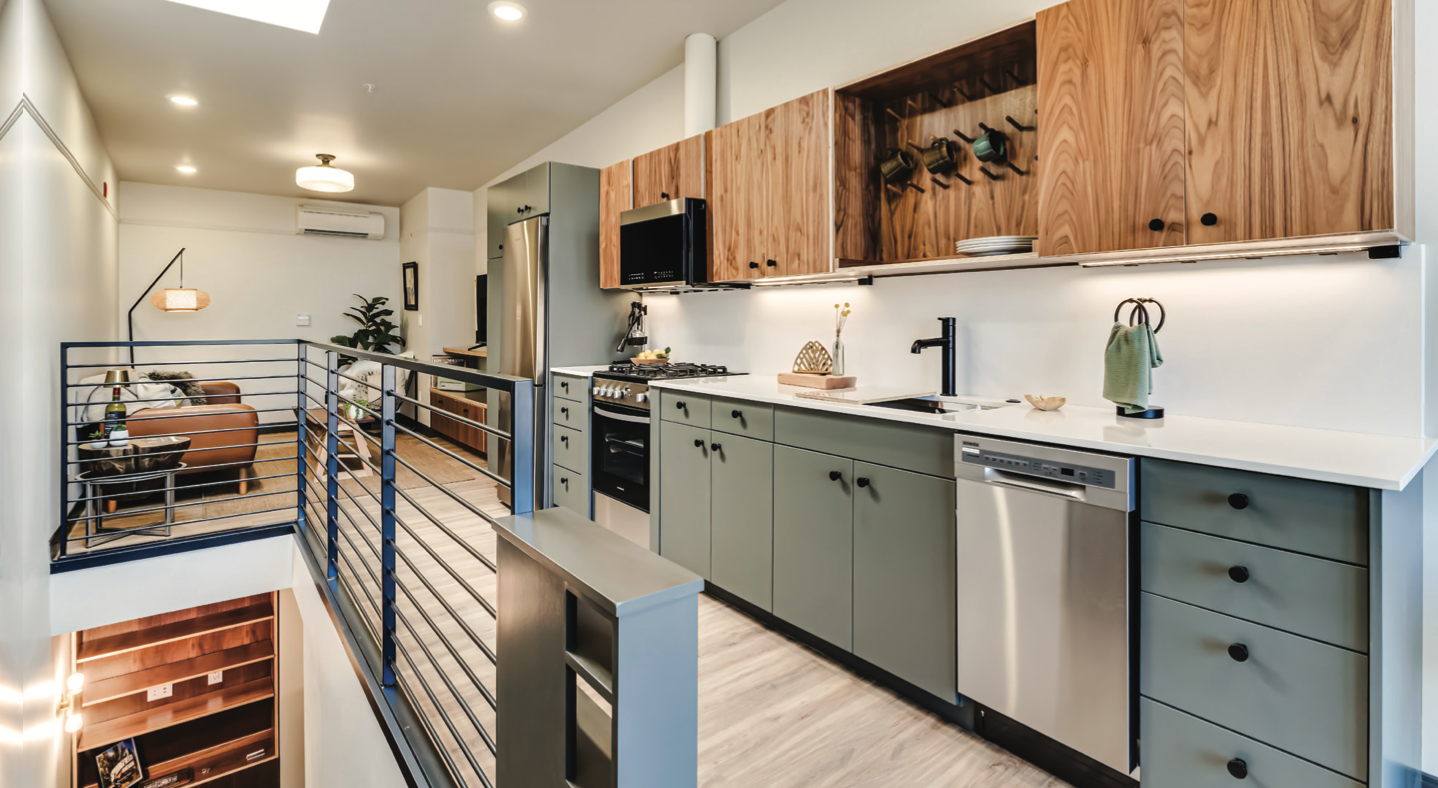
Downtown Springfield Developments
Downtown Springfield’s Rivett Building opened in 1909. Originally one story, the Rivett has undergone a transformation by development group Masaka Properties LLC. At the end of 2024, a renovated Rivett reopened with three stories. Along with its ground-floor businesses and live-work spaces, the Rivett has 12 new top-floor loft apartments.
“The city of Springfield strives to preserve and repurpose historic buildings whenever feasible, recognizing their cultural and architectural value to the community,” says Mark Rust, city of Springfield’s planning manager. “The building code provides pathways to ensure that historic structures can be retained while maintaining fire and life safety standards for occupants. This often requires innovative approaches, such as structural reinforcements, to meet modern safety requirements while preserving the character of older buildings.”
The Rivett Lofts renovation showcased both the challenges and opportunities of these projects. “Adding two new floors on top of a 115-year-old building required serious structural intervention on the interior in order to maintain the historic integrity of the exterior facade,” says design and architecture firm Campfire Collaborative. At the same time, design, construction, and inspection partners rose to the challenge.
The project successfully repurposed the historic building,” adds Campfire Collaborative, “preserving its architectural character while transforming it into a functional modern space.”
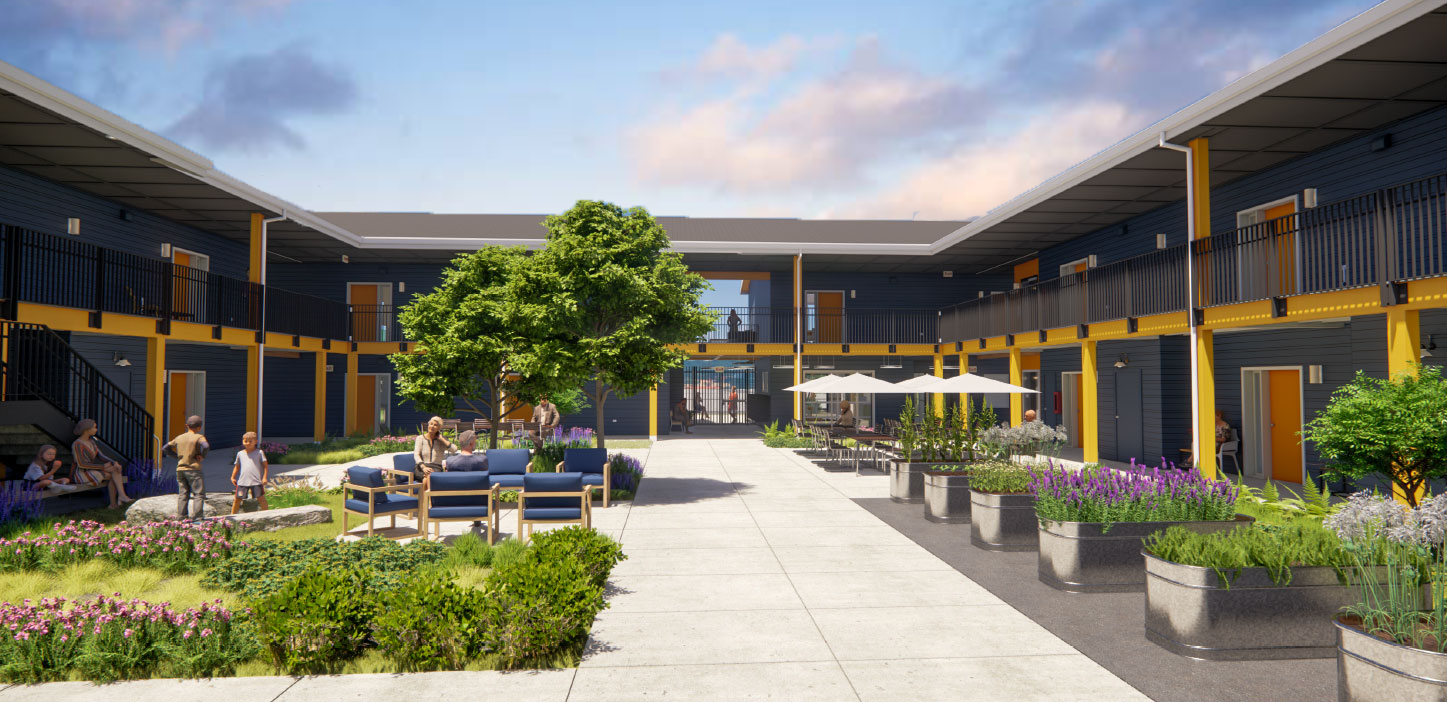
Preserving Historic Features
According to Campfire Collaborative, the Rivett renovation has brought back to life historic features, such as original window and door openings, transom windows, and the original decking and framing. This combination of new construction and restoration has turned up other historic treasures, including an early 1900s inkwell, apothecary bottles, and even boards from old shipping crates.
Each apartment is “lofted with the main living space on the upper floor to maximize views from generous ten-foot-deep balconies,” says Campfire Collaborative. “The project is the first of its kind in downtown Springfield, combining adaptive reuse and new construction.”
The new apartment units by Masaka Properties LLC, point to a broader demand not only for upscale apartments, but also condos, townhouses, and other housing styles and ownership structures.
“Condominiums are currently limited in Springfield but represent a potential growth area,” notes Rust. “There is growing interest in housing co-ops and land trusts, which provide innovative ways to combine ownership and rental tenure, offering flexibility and affordability.”
Additional developments are in the works. The 39-unit affordable housing development Alma Apartments, by Cornerstone Community Housing, is expected to open this August. And, the city of Springfield has acquired three properties that are flagged for affordable housing, with potential housing types including middle housing and apartment complexes.
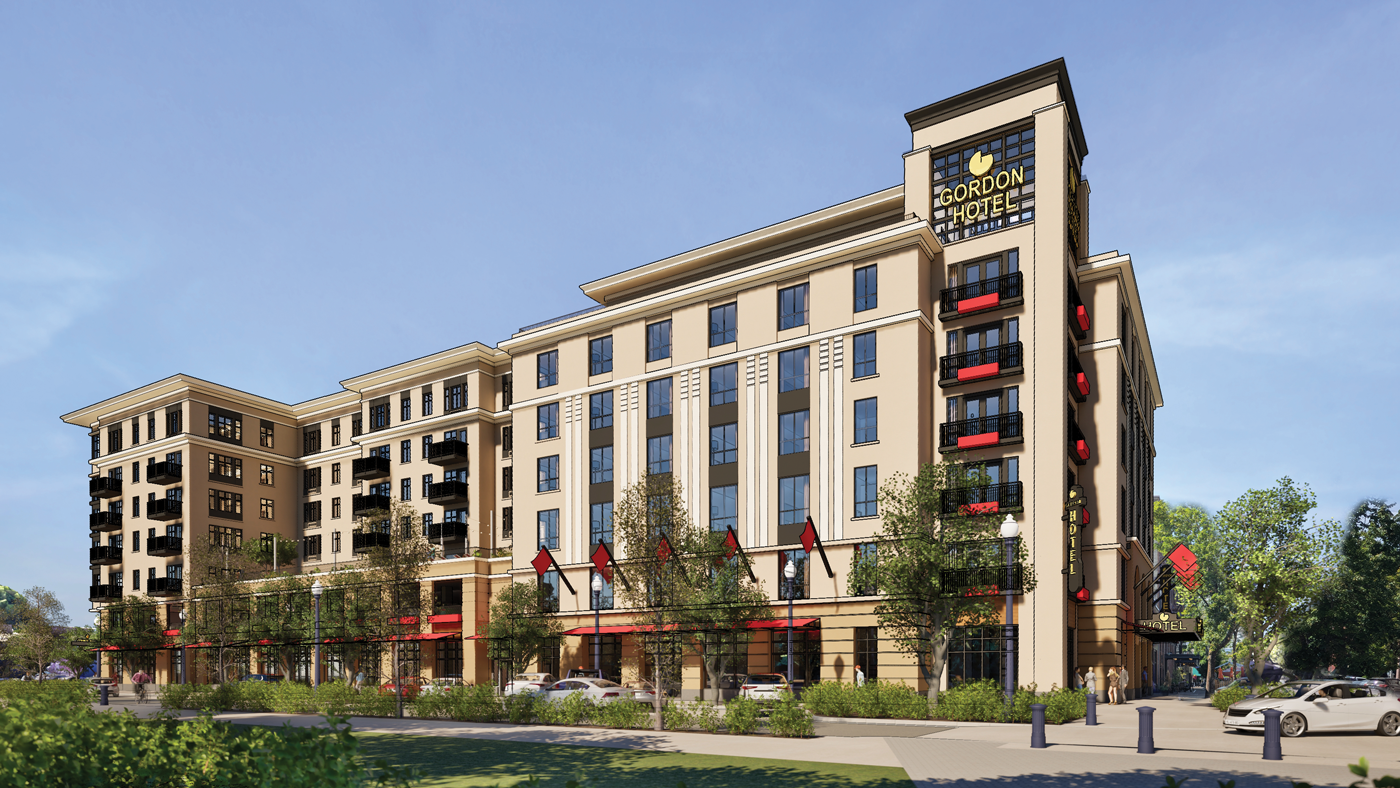
Obie Expands to Corvallis
The need for more housing isn’t just felt in Eugene and Springfield. Building on their Gordon Hotel and Gordon Loft projects, Eugene’s Obie Companies is now building a combination of 92 apartments and 75 hotel rooms in a seven-story development in Corvallis, estimated to open in 2027.
The 1st and Madison location, formerly occupied by Flat Tail Brewery, aims to combine housing and short-term stays, along with spaces for dining and socializing. Planned apartment amenities include a community kitchen, river-view outdoor terrace, fire pits, and an outdoor grilling station, along with lifestyle areas such as bike storage, pet wash area, and a fitness center.
Housing needs take time to fill, but Eugene and Springfield continue to work toward providing more new and renovated housing for a range of ages, incomes, and family sizes. In 2023, for example, Springfield issued building permits for 522 dwelling units, including 297 multi-unit apartments and 174 single-family homes.
“While housing development has lagged in prior years, we’ve seen promising growth recently,” says Ditzel.
At the same time, a new draft Oregon Housing Needs Analysis (OHNA) notes that Springfield alone needs to plan for 7,645 new housing units over the next 20 years.
The work continues.
